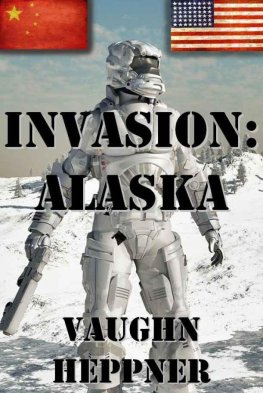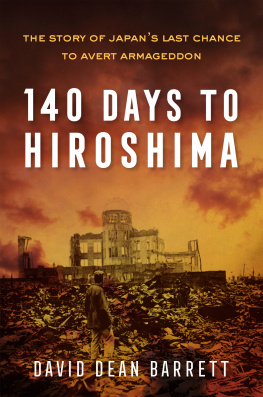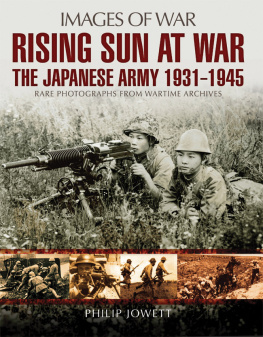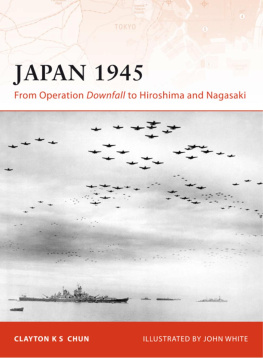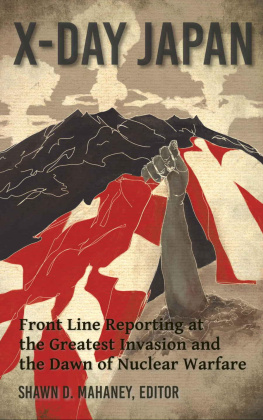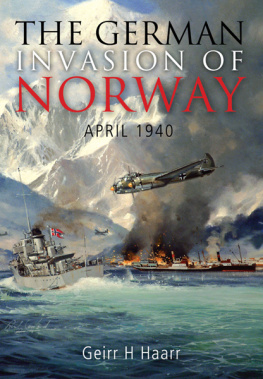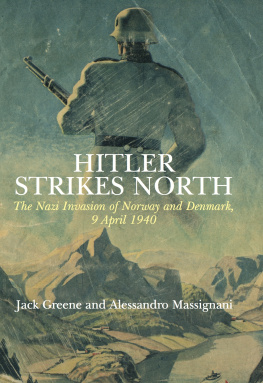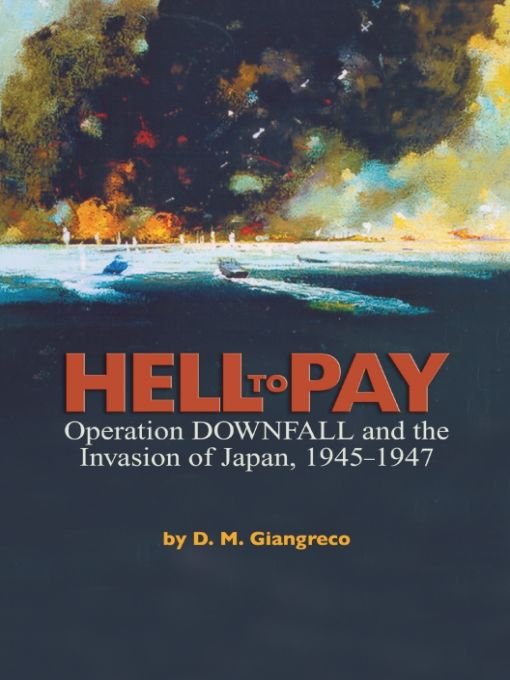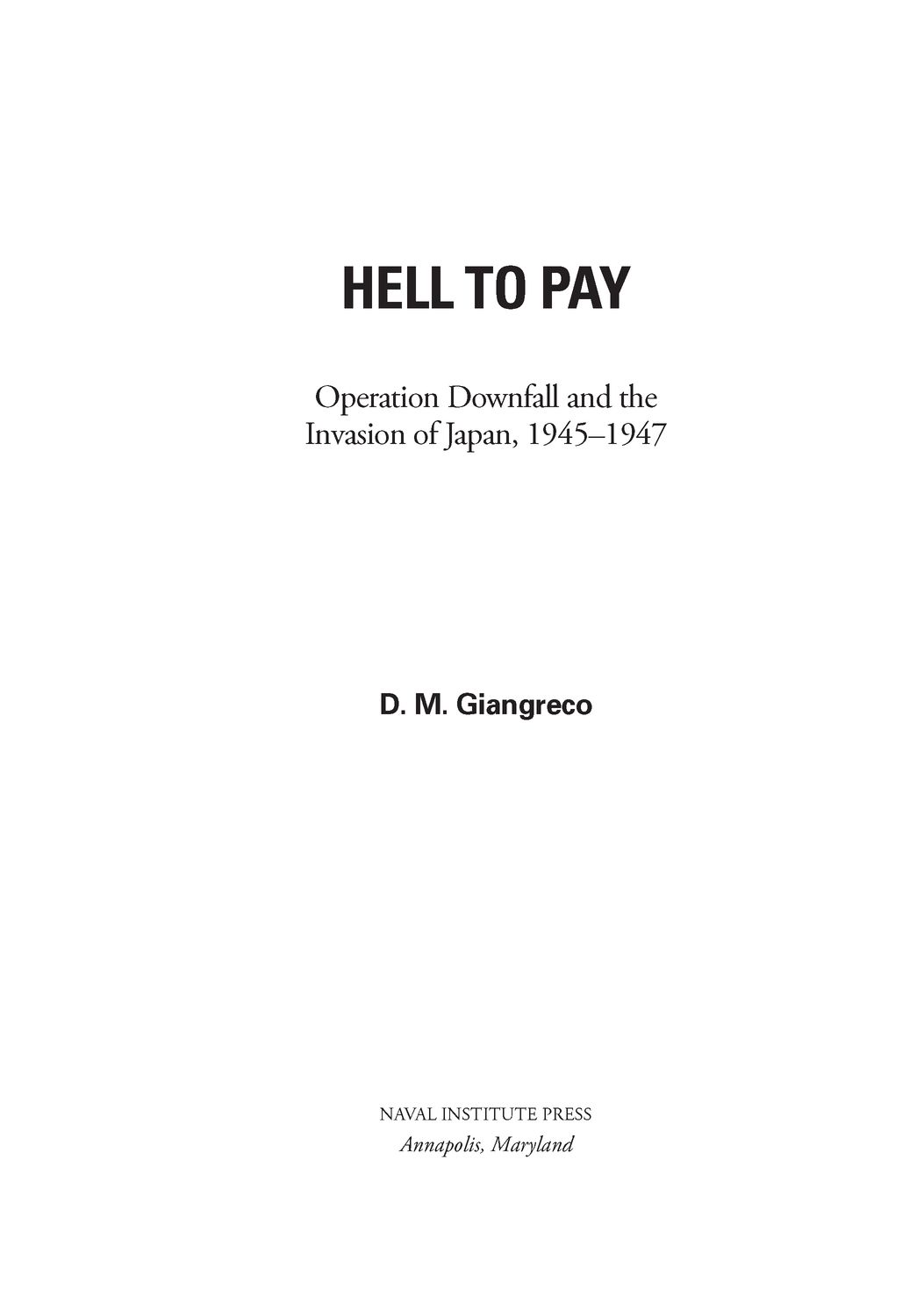Table of Contents
Table of Figures
Foreword: Three Colonels
BY STANLEY WEINTRAUB
From what we learned in the last days and the aftermath of the two-hemisphere world war that closed with the collapse of Nazi Germany and Imperial Japan, we know what the world would have been like had we been unwilling to pay the price to defeat them. Yet as the war dragged on beyond Europe and the casualties escalated, and as some combat veterans began returning while others now never would, the home front was becoming less willing. The public began to lean toward militarily unthinkable negotiation, while encouraging Japans submission by air and sea power, avoiding the heavy costs of invasion.
In 1945, during the intense final months of World War II, the price of victory was being calculated and its extent determined by three men who, in 1918, had been in uniform in France. One was a Missouri National Guard captain whose 35th Division, in the six days of the culminating Meuse-Argonne offensive, had suffered nearly 7,300 casualties, half its front-line strength. In the interwar years, even before he went to Washington as a senator, Harry Truman rose to Reserve colonel. In wartime he made a sterling reputation heading the U.S. Senate investigating committee on military spending effectiveness. Truman was now president, succeeding Franklin D. Roosevelt, who had died suddenly in mid-April.
Another in the leadership trio who once bore the bird on his shoulders was the now-elderly Secretary of War Henry Stimson, who was once an artillery officer and twice a Cabinet member, with War and State Department portfolios under earlier, Republican administrations, and who still preferred being called Colonel. The third had been a colonel and on the General Staff of the American Expeditionary Forces (during World War I). On his return to the States after the war he was meanly reduced to his prewar permanent rank of of captain. On September 1, 1939, as war again broke out in Europe, George Marshall moved up, as Roosevelts appointee, from the one star he had finally earned seventeen frustrating years after the army was drastically downsized, to an instant four stars as Army chief of staff.
Some of the major decisions closing the war with Germany and accelerating the downfall of Imperial Japan were inherited by Truman. The feisty accidental president, who took pride in his Oval Office motto, The buck stops here, had to make sweeping decisions advised and backed by Marshall and Stimson. Ironically the civilian-suited war secretary was more militarily tough-minded than his seemingly austere top general, who now wore his congressionally mandated super rank of five stars, but always, realistically, kept in mind public attitudes, industrial capacity, and logistical limitations. Winston Churchill, who called George Marshall the architect of victory, was not being overly theatrical when he recalled that the British government, its fading imperial sway at stake, was pragmatically resolved to share the agony... [of] the final and perhaps protracted slaughter.
D. M. Giangrecos striking title, Hell to Pay, represents the closing wartime dilemmas and the likely repercussions to their solutions. After ten years of violent aggrandizing in China, Japan had, in 1941, simultaneously and shockingly, attacked four nations over a seventh of the earths surface. Defeating the sprawling Japanese empire had required fiscal fortitude, technological breakthroughs, immense transfers of men and materiel across two oceans, and continuing evaluation of the terrible human cost of the two stage invasion of Japan building up on the Pacific RimOperation Downfall. To pacify a fickle electorate believing that a war half-won only required half-mobilization the rest of the way, the American military establishment, at odds with its needs, began sending some seasoned veterans home even as Nazi Germany imploded into chaos.
The complex conditions perceived by both Japanese and American decision makers, and the difficult assessments made at the time, require, in Hell to Pay, the portrayal of vast arrays of numbers. In few books about any subject other than astrophysics are figures more provocativeand more persuasive. Giangreco turns number crunching into high drama. The clouds of supporting aircraft assembled, from the Marianas and the Philippines to Iwo Jima, Okinawa, and dozens of fleet carriers, ran into five figures, so many that they hazarded getting in each others flight paths. The assault shipping (four thousand oceangoing vessels alone) being gathered, and troops committed for the Kyushu landings planned for late October 1945, far exceeded D-day in Normandy (to face a Japanese buildup that by the time of their surrender totaled nearly 917,000 troops on the island). The coordination of landings in predawn darkness and in the fog of smoke screens risked a nightmare of swampings, collisions, objectives gone awry, and deadly friendly fire. The Japanese intendedconceding extraordinary lossesto inflict 20 percent casualties before any GI set foot on the beaches and further carnage thereafter during the inexorable grind of daily close-in battle conducted at the distance that a man can throw a grenade.
The long-lived and much-quoted canard that estimates of horrific casualties during an invasion of Japan were postwar apologetics for the Bomb is set aside here by Giangreco, an indefatigable and precise military historian, in clubs, diamonds, hearts, and spades. The frightful dimensions of putting Allied boots on the ground on Kyushu and Honshu are spelled out from both Japanese and American planning documents and the recollections of participants on both sides. The consequences could be projected. On and adjacent to Okinawa, an island only sixty miles long and a third as wide, 13,000 Americans died and 37,000 were wounded. Japanese deaths, including hapless Okinawan civilians, exceeded 142,000. The seas were crimson with corpses. Harry Truman told his assembled planners in a momentous White House conference, as the enormous casualty figures were still coming in, that he hoped to avoid the intolerable cost of another Okinawa, grotesquely magnified, from one end of Japan to the other.
The Japanese military culture had, historically, long rejected surrender. Okinawa was not a worst-case scenario, it was a reality. The far more extensive killing ground of Japan was waiting to happen.
Although Japans colonial empire was shrinking and its internal resources were dwindling, so was the American war enthusiasm generated by Pearl Harbor. A negotiated peace rather than overwhelming victory might, however, merely postpone, rather than preclude, another and more horrible war. The three former colonels all understood that likelihood from their experience in France in 1918 and beyond. That war had been won; only the peace was lost. Not an inch of German soil had been occupied when the Armistice was concluded, and the German flag continued to fly over an unoccupied Berlin. That anomaly had not happened again in Germany in May 1945 and could not be permitted by default in Japan.
But lengthy attrition was not in the American playbook. What Operation Downfall would cost was projected in the planning documents but only became concrete after the surrender. Here Giangreco lays it out by the numbers. After the war, for example, the Japanese in the Home Islands surrendered 28,428 knee mortar grenade launchers with 51,000,000 of their ballistic grenades. And contrary to popular belief, they had aviation fuel stockpiled for thousands of suicide planes and thousands of manned torpedoes and suicide craft in hiding. The Japanese could persevere under harsh conditions alien to Americans, as troops had already discovered in New Guinea and on Iwo Jima. The Japanese even counted on, as in their past history, punishing typhoons (or


